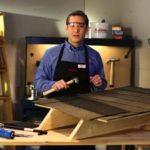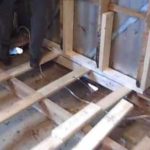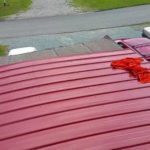5 Interior Design Mistakes to avoid….The Southern Girl talks about 5 home decorating mistakes and gives you Interior Design Ideas on how to fix them:)
Options for Adding Discount Hardwood Flooring
The look of hardwood flooring does not need to cost a large amount. If you want to replace your carpet or vinyl with hardwood, two options for affordable flooring are available: going with a lower grade or choosing discount hardwood flooring. "Discount" and "value grade" flooring, however, are not the same. While value grade wood is determined by the amount of type of imperfections on the surface, such as knots and color variations, discount hardwood flooring encompasses all grades sold at a lower price.
Typically sold wholesale, discount hardwood flooring takes a significant percentage off the original price and the quality is not compromised. Exotic and domestic species of solid and engineered hardwoods are all sold at a discount.
Exotic and domestic solid hardwood are sold wholesale at a discount. Solid hardwood, regardless of price, is cut directly from a wood log into a plank and has tongues and grooves added to all sides. Sold in thicknesses from 5 / 16ths to 3 / 4ths of an inch, solid hardwood is sensitive to changes in humidity and, as a result, can only be installed at or above ground level. When installed, the wood needs to be nailed down on top of a wood subfloor.
With more location options, engineered hardwood flooring can be purchased at a discount for domestic and engineered species. Although 100-percent hardwood, engineered flooring is more resistant to moisture and consistants of three to nine thin wood plys bonded together through heat and pressure. The top ply is the visible species, and all below are the same or a more stable wood.
Engineered hardwood flooring can be placed below ground level in a dry basement and in locations at or above ground. The material can be placed over a radiating heat source, concrete, or any hard subfloor, such as vinyl or tile. The wood itself can be glued or stapled down, and floating also saves time and preserves materials. Several brands of engineered hardwood offer click-lock or lock and fold flooring, in which all glue and groove edges lock together and the planks just need to be set in place.
Prefinished and unfinished are two options for discount hardwood flooring . In addition to a lower price, prefinished flooring takes less time to install. If you are covering a large area with new hardwood, prefinished is best for the job. If, however, you want to match new hardwood to existing flooring, installing unfinished hardwood and adding your own finish often creates a better match and seamless appearance.
How to Repair Small Holes in Your Roof

Learn how to repair holes in your roof with this helpful advice. Then find and stop small roof leaks before they become big, costly problems. True Value brings do-it-yourselfers together to…
roofing contractors nj
Bamboo Flooring for the 21st Century
Bamboo flooring has emerged as a new material for the commercial design market. Its unique look and earth friendly properties have made it popular for flooring and panels. Although bamboo has been used as a construction material for centuries, it has only recently emerged as an engineered flooring product.
Here are some important facts you should know before selecting your bamboo flooring:
Bamboo is a grass not a wood. As a grass bamboo regenerates faster than wood. In fact, bamboo is typically harvested within five years of sprouting, making it a truly renewable resource. Its use can provide a positive impact on the environment. Harvesting bamboo serves to stimulate the growth of very extensive underground root systems, which develops fast growing sprouts the following spring. Sprouts breaking through the soil can grow as much as 2 feet the first day.
Bamboo flooring's hardness varies. While northern red oak's characteristics are the same regardless of where it is grown, the same can not be said for bamboo flooring grown in the different Provinces in China. Although bamboo used for flooring is always the same species, there are significant differences caused by environmental conditions. Where it grows, what time of year it is harvested, the age of the bamboo, the soil chemistry and the amount of rain are all variables that will affect the hardness and stability of bamboo flooring.
During the carbonization process, bamboo flooring loses about 20% of its hardness. The fibers are weakened by the presence of high pressure steam, which is used to change the bamboo strips to a darker color. The color change is found through the entire plank. Carbonizing creates many different tones which can not be precisely controlled.
The best bamboo for floor grows on the top portion of a mountain with moderate rain, is five to eight years old, is harvested in the winter, is five to seven inches in diameter and is located in either the Fujian or Zehjiang provinces in China. The bamboo harvested in these provinces is harder and more stable than other locations due to the environmental conditions.
Bamboo flooring and panels are strips of bamboo glued together. The glues produced and consumed in China typically are laden with formaldehyde. When selecting your bamboo flooring product, ensure that only quality adhesives were used in its manufacture, and avoid cheap adhesives which are typically laden with formaldehyde.
Mobile Home Repair Supply NC 28462 Floors, Mobile Home Roof Repairs

We can repair your mobile home too. http://www.DrewsRoofingAndHomeRepair.com We offer many of mobile home repairs and fixes just watch our videos for tips and tricks for doing it your self….
roof leak repair NJ
Cool Jobs: Interior Designer // Up Close with Claire
In this installment of my Cool Jobs series, my dear friend Martha Mulholland is here to discuss the ups and downs of interior design, and illuminate how HGTV …
Eternabond RV Roof Repair Tape How To Apply and Review

Eternabond RV Roof Repair Tape How To Apply and Review. I use eternabond tape for the first time and show how I am using Eternabond RV Roof Repair Tape to reseal rv roof and how to apply it….
NJ roofing
Interior Design Trends 2016
INTERIOR DESIGN – The Southern Girl shows you the Interior Design & ColorTrends for 2016, what you will be seeing in your local stores and how you can …
Mobile Home DIY Affordable Roof Repair part 2 of 2 “Sheet Metal”
Subaru XV – Repairing a destroyed car (inc. Roof Replacement) Pt.1

Repairing a badly damaged Subaru XV. Successful attempt of repairing a severely damaged Subaru XV which The car is basically destroyed, but the result of the repair is amazing. —————–…
roofing repair NJ



